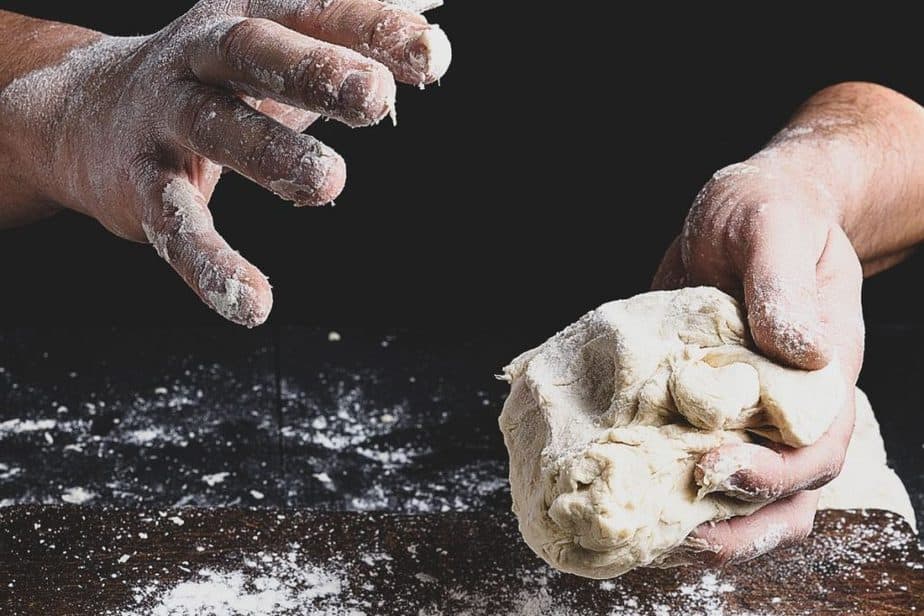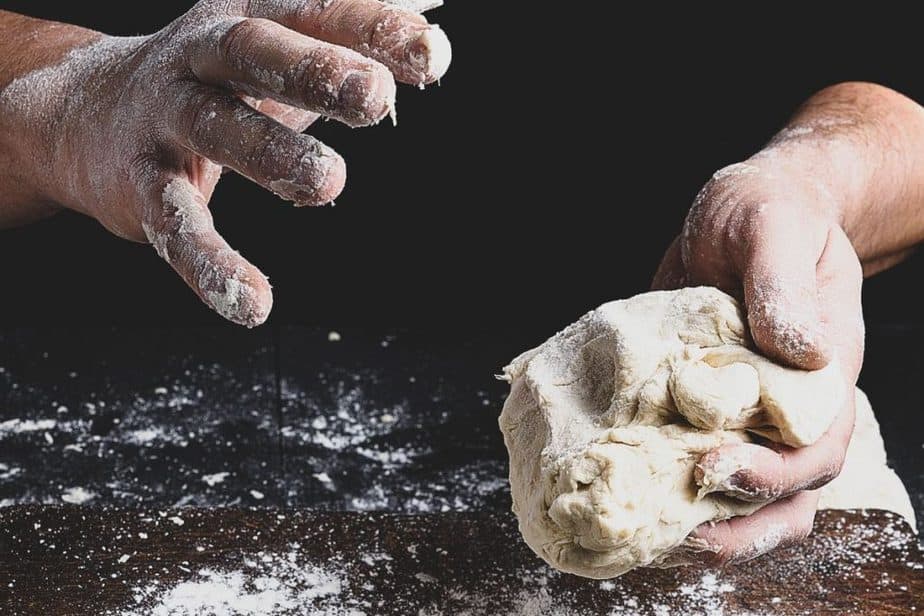
You have followed your pizza dough recipe to the letter, you thought that everything had gone to plan. But then, as your start kneading the dough, you notice how sticky it is. Surely that isn’t right?
It can take some practice to be able to make the perfect pizza and one of the things that most home pizza chefs find challenging is getting the dough to the right consistency. However, many of them often find that they end up with sticky dough and this can be frustrating, to say the least.
Sticky pizza dough is going to cause problems but more often than not, it is easily solved. Typically, pizza dough becomes sticky when the flour to water ratio is not right. While dough does need a good amount of hydration, there is an important balance that you must stick to.
In this article, we are going to be exploring why you might end up with sticky pizza dough and giving you some tips to avoid this in the future.
Is Pizza Dough Meant To Be Sticky?
It can be a little tricky to get things just right when following a recipe for pizza dough. All pizza dough recipes will include water and this is vital for the hydration of the dough. If the dough does not receive enough hydration, this can result in a product that is far too dry.
But you need to get the dough to just the right consistency. Your dough should be slightly sticky however, you don’t want the dough to be so sticky that it sticks to your preparation surface or the pizza stone or pizza peel.
What Does It Mean When Dough Is Sticky?
Quite simple, if dough is too sticky, it means that there is too much water in the recipe. Now of course, water is one of the main ingredients in dough and it is imperative for its hydration. However, too much water can result in sticky pizza dough.
The problem is that a lot of people see that the dough is too sticky and will start adding lots more flour. While this can be a solution. It can also take away from the hydration and turn your problem into something completely opposite; dough that is too dry and crumbly.
That being said, while too much water is the main culprit, you might also find that the wrong type of flour can also make dough sticky. This is because different types of flour will create different levels of dough absorption where water is concerned.
You might think that using a traditional, finely milled Italian 00 flour will help you to make pizza dough that never goes wrong. But this isn’t necessarily the case.
As a rule, you need to use a stronger flour to make the dough for pizza as this will create a higher hydration pizza dough owing to its ability to absorb water a little bit better than other types.
Unfortunately, it can be difficult to determine the strength of the flour as many flour manufacturers do not include this information on their packaging. Fortunately, there are many online guides that home bakers can follow to get things just like, like this one.
How Do You Fix Sticky Dough?
Before we start looking at all you will need to know to fix sticky dough, it is important to make you aware that there is a certain degree of stickiness where dough is concerned. This is as a result of the ingredients combining together and is important, to an extent.
As you are kneading the dough you are encouraging gluten development. Both yeast and flour contain gluten and when pizza doughs are kneaded, this gluten develops and makes the dough much stretchier, which is an important thing. However, it can also cause it to become sticky, and if you find yourself in a situation where your dough is sticking to your pizza stone, pan, pizza peel and anything else it touches, there is a way or two you can do to rescue it.
The Need To Knead
Many people find that the reason their pizza dough is too sticky is that they do not knead it for long enough. Once the dough is one your work surface and read to be kneaded, you must be prepared to spend some time on this part of the process.
You might be keen to get out the pizza stones and start cooking but it is vital that you don’t rush through everything when making pizza.
Most people knead by hand and this can take time. There are people who like to use a dough scraper to manipulate their dough but using your hands is more alike the traditional method.
Kneading by hand should be done for at least 15 minutes, but at times, it can take as long as half an hour. The best way to fix sticky dough is to knead it more. As you do this, the gluten will develop more and give you a much more elastic dough.
You can add flour to your kneading surface and this can help to make the dough less sticky.
Not only is this important for stopping the dough from sticking to your pizza stone, pizza peel or any other surface it touches, but it will also give you a much nicer pizza crust.
Humidity
For those who are in a particularly humid location, this moisture in the air can penetrate the dough making it stickier than if you were making it in a drier environment. This along with the liquid components of the dough like oil and water can cause the dough to be incredibly sticky.
While you may not be able to change the environment, you can try adding less liquid to the dough. Furthermore, always make sure to store your dough properly if you aren’t ready to use it. It is best to store the dough somewhere that is not humid like the fridge, allowing it to come back to room temperature when you are ready to cook.
dd More Flour
Out of all the reasons that dough becomes sticky, the biggest reason is that there is too much water. The dry ingredients like yeast and flour cannot absorb this and you may need to add more.
As a rule, the dough should have a hydration of about 60%, this means that if you are using 1000g of flour, you would need 600g of water.
Water Temparature
Before you can shape you pizza and put it onto the pizza stone for baking in the oven, you will need to have made sure that you have followed the recipe precisely. You will notice that all pizza recipes contain flour, water, oil, salt, yeast and sugar.
A lot of people make the mistake of adding cold water. Cold water is not great for pizza dough and you should always make sure that you use warm water. Warm water is much better for hydrating the yeast, cold water simply cannot manage this.
If you haven’t used warm water, this may be the one thing that means you have to start making the dough over again.
Pizza Is Sticking To The Pizza Stone
You’ve spent ages with your hands in the dough to make sure it is properly kneaded, you have adjusted the level of liquid in the pizza dough and now, as you come to put the pizza into the oven, you find it is sticking to the pizza stone.
Whether you use a fan oven or a traditional brick pizza oven, pizza stones are a great way to ensure even cooking and get that beautiful fluffy crust, However, all of us know the pain of lovingly crafting a pizza only to find that said pizza is stuck to the stone when it comes out of the oven.
You can use parchment paper on your stone but one of the best methods is to use cornmeal; something that a lot of home bakers have in their food store. This will stop the pizza from sticking but will not burn, which can be a problem when using flour on the stone.
Conclusion
Pizza is a hugely popular dish but making pizza dough is something of an art. But we all have to start somewhere and getting your pizza dough just right doesn’t have to be a chore.
Whether you find the pizza dough is sticking to the stone during cooking or isn’t stretching enough, there are some easy ways to solve this issue.
Pizza dough contains water but if you add too much, this can make the pizza dough sticky. Furthermore, using the wrong kind of pizza flour can affect how the dough absorbs the water. Your water should always be warm as pizza dough cannot develop gluten as well with cold water.
